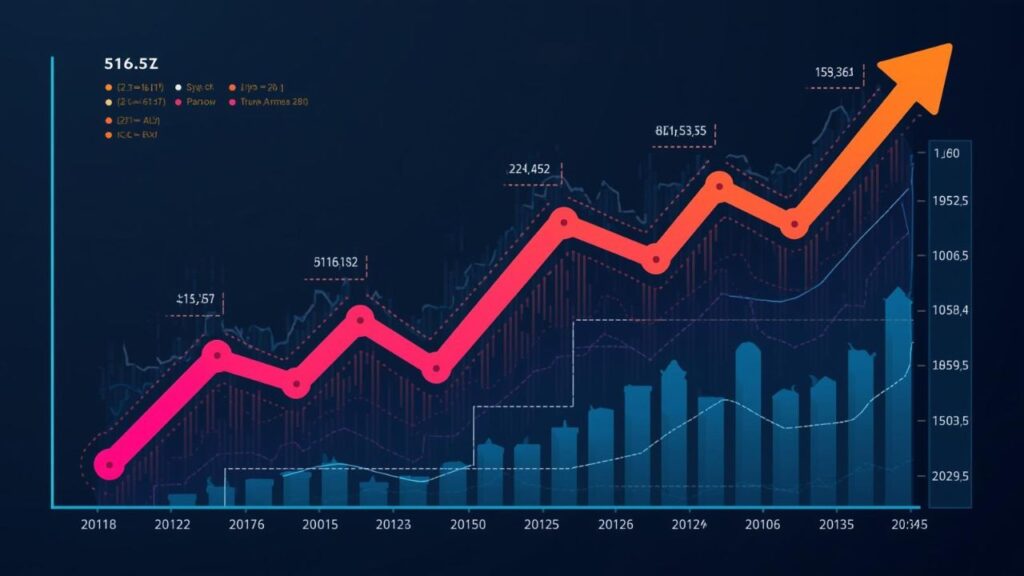The investment landscape may seem like one might be attempting to ride a rollercoaster whilst learning a new language. It is thrilling, a bit intimidating, and replete with complicated terminologies that can spin your head. But what would you do with a friendly, straight forward guide that can put everything into perspective? It is here that thesaul’s saul’s investing discussions conversations enters. Here is a discussion with an astute friend who gets to the point and talks to us of how to create real wealth in this day and age. That is what this article will capture, and the core investing principles will be broken down into simple and actionable ideas that you can actually use. You are either a beginner or looking to sharpen your strategy, consider this as your own conversation on clever money moves.

Understanding Saul’s Core Philosophy
The core of the Saul economic thinking is strong consideration of long term growth rather than short term achievements that are risky. It is not a plan to become rich on the first day of gambling on some unheard cryptocurrency that you learned about on social media. Rather, it is a simple matter of work and earn money by investing in good quality companies that continue to expand their sales and profits each and every year. The trick is to consider yourself as an investor in a business and not in some stock ticker. You have a small part of all that a company has and all that it can possibly make in life when you own a share of it.
This change of mind is essential since it makes you investigate what a company is really doing, how it is earning the money, and in what way it is in a strong position to improve or not to improve in the future instead of seeing its stock price rise and fall every day.
The Power of Continuous Learning
The non-negotiable value of ongoing education is considered one of the most stressed issues in Sauls stock talks. Market is dynamic and there are new industries as well as old ones that evolve and as such, your knowledge must also evolve. This does not imply that you must have a degree in finance, or spend all your time in reading perplexing graphs. It is just the matter of getting used to remaining interested and educated. You are able to listen to the business trend podcasts on your way to work, read articles on trusted financial websites, or track the quarterly earnings of the companies that you are interested in. It is aimed at gradually but surely developing your knowledge of how various businesses work and what is their success. Such self-education is your strongest protection in market hype plus your most powerful weapon in making choices with confidence.
Identifying Quality Growth Companies
So, what do you do to search these wonderful companies to invest? The strategy of investment that Saul frequently pursues is to seek out companies that have a sustainable competitive advantage, commonly referred to as a moat. Consider a moat around a castle–which keeps the castle out of the reach of invaders. A business moat keeps the business out of competition. This may be a strong brand that everyone is familiar with and believes in such as Apple, or a technology that is difficult to replicate, such as the chips created by NVIDIA. There are also network effects moats such as Facebook or Uber which get more valuable the more people use them.
You also would like to see large growth in revenue, indicating more people are purchasing their product, and increasing profits, indicating the company is spending their money efficiently. Basically, you are seeking a tremendous business that is conquering in its sector.

The Importance of a Long-Term Horizon
The short term market is unpredictable. News headlines or investor emotions or what is happening around the world can make or break the stock prices. The strong advice given by saul’s investing discussions approach is to zoom out and look at the long-run picture. When you feel there is potential in a company in the next five years or ten years, one bad week or even one bad year should not make you run out of the investment. History has demonstrated that markets have declines and crashes but have always been on an upward trend over the long term. You can sit on quality investments during the volatile moments in the market and it allows it to grow, recuperate during the downfalls and compound your returns.
It is this forbearance that unites the successful investors with those who respond to the slightest fluctuation and are usually found to be buying high and selling low.
Managing Risk in Your Portfolio
Even the most successful companies may encounter some unforeseen difficulties. This is why intelligent risk management is a key component of the investing conversations of saul’s investing discussions. Risk management is most effectively handled in the simplest approach which is referred to as diversification which simply means not putting all your eggs in one basket. In the event that you invest all your money in an individual stock and something happens to that company, then you might lose a lot. However, when you diversify and invest in a dozen or more firms in other sectors, you will not be crippled by a single issue in one sector. But it is also worth not being too diverse to a point where you become over-diluted. It is to focus on a concentrated portfolio of the best of your ideas–enough to be safe, not so many that your returns become watered down and mediocre.
Learning From Investment Mistakes
Each and every investor errs; it is an inevitable incident of the process. It is the manner in which you deal with them. This learning philosophy by Saul allows him to view all mistakes as a valuable learning experience. Have you purchased an asset without knowing the business? Did you panic-sell when the market went down? Did you go against your own research and go on a hot tip? Unless you demoralize, take it as a lesson. Examine the reasons and causes of what went wrong. Write it down if you have to. It will make you a better and stronger investor the next time because it will utilize a financial loss as a learning experience. The idea is to ensure you never repeat the same mistake again and this ensures your strategy becomes clear and better at decision-making.

Adapting to Modern Markets
The modern world of investing is quite different compared to the way it was only ten years ago. The contemporary market debates of saul’s investing discussions recognize the effects of new technologies and platforms. We have now zero-commission trading apps that enable anyone to become an investor with ease and cheaply. Exchange-Traded Funds (ETFs) can purchase a small share of hundreds of companies in just one click, that is, a wonderful device of diversification. Such domains as cryptocurrency and AI are also transforming the situation and opening up new opportunities and threats. A contemporary strategy implies knowing these tools and trends without always following every fashion. It is about leveraging the power of new technology and investing in the fundamental tenets of purchasing great businesses in the long term.
Saul’s investing discussions vs. Traditional Investing:
| Aspect | Traditional Investing (The Common Approach) | Saul’s Investing Philosophy (The Discussed Approach) |
| Main Goal | Preserve wealth, steady gains. | Grow wealth aggressively over time. |
| Strategy | Diversify across many sectors and assets. | Concentrate on your best few ideas. |
| Time Horizon | Short to medium-term. | Very long-term (5-10+ years). |
| Focus | Stock price, market trends. | Company’s business fundamentals. |
| When to Sell | To take a profit or cut a loss. | Only if the company’s story breaks. |
| Key Metric | Dividend yield, P/E ratio. | Revenue growth, competitive moat. |
| Activity Level | Often involves frequent trading. | “Buy and monitor,” not “buy and sell.” |
Conclusion
Investing might seem like a very daunting undertaking but it does not have to be. Through the principles commonly discussed in the investing conversations with Saul, which include a focus on the long-term quality, constant learning, and risk management discipline, you will be able to establish a strong base of financial growth. Keep in mind that the process of making investment is a marathon and not a sprint. It is about taking wise choices, learning with your experiences and being patient enough in the ups and downs of the market. Join something familiar to you, keep it cheap and never cease to wonder. Consistency will help you to be sure that eventually you will be able to secure your financial future and reach your most significant money objectives.
FAQ’s
1. What is Saul’s main investing philosophy?
It concentrates on long term acquisitions and retention of quality, fast growing enterprises to create wealth.
2. How do I find companies that fit this strategy?
Search through businesses that have a high growth in revenues over a period of time, high earnings and growing profit margin.
3. What does a “company moat” mean?
It is a lasting competitive edge, such as a well-established brand or technological uniqueness, that shields any given company against the competition.
4. Why is company management so important?
Great leaders are also making intelligent decisions which deliver growth and securing your investment in to the future.
5. How should I handle it if my stocks drop?
Stay focused on the long term. Panic selling should not be the case when the fundamentals of the company are still in place.
